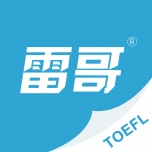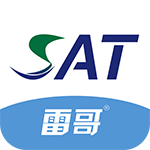雷哥考研 > 题库 > 2020年管理类联考11月公益模考英语(二)测试卷 > 阅读理解A
Text 3
Big companies may want to hire mavericks but most organisations are built on rules.
Hire mavericks: a classic piece of management advice, proposed since at least the 1980s—and almost impossible to enact successfully. Still, big organisations continue to boast that they recruit and develop rule-breakers and renegades. “Status quo challenger” has even become a popular self-description on LinkedIn.
Leave aside the fact that a break-all-the-furniture disrupter is unlikely to spend much time updating his or her LinkedIn profile, let alone join the graduate trainee programme at a multinational: corporate success is often based on what already works.
Companies must strike a near-impossible balance as they design their hiring and leadership development policies. They need to cultivate enough changemakers to advance the company, but curb revolutionaries’ instincts to abandon the organisation’s core values, breach acceptable behaviour or swerve recklessly away from tried and tested approaches.
The word “maverick” derives from Samuel Maverick, a 19th century Texas rancher who allegedly refused to brand his cattle. Wandering cows became known as mavericks. Big companies, though, wish to apply the branding iron from day one and move the herd in the same direction.
As a result, “maverick bosses” are rarely the product of an orderly succession plan. A list of those who have recently earned the tag (all men, interestingly) includes Elon Musk, the late Sergio Marchionne of Fiat Chrysler, SoftBank’s Masayoshi Son, Travis Kalanick of Uber, Jeff Bezos, Jack Ma and John Legere, chief executive of T-Mobile USA.
In most cases, these are entrepreneurs and founders. The first self-styled maverick boss, Semco’s Ricardo Semler, who became known for decentralising management, and wrote a 1993 book about it called Maverick!, did not rise through the ranks. He was handed control of the Brazilian engineering group by his father. The exceptions to the founder-entrepreneur model—Mr Marchionne and Mr Legere—were outside appointments to struggling companies.
One headhunter says mavericks are useful as non-executive directors, who can “challenge the executive management within the context of the boardroom”. Their elevation to chief executive—except at companies that are struggling—almost always leads to “tissue rejection”.
This is not an argument for stasis. That way lies extinction—the destiny of companies that continue to appoint what I’ve called “default managers”.
Nor do I believe dissent should be shut down. Even established companies should try to recruit a few revolutionaries and free spirits. In fact, those kinds of people are essential to some activities. Think of the creative cartoonists at Pixar, or the innovative engineers at Google.
32. To “strike a near-impossible balance” means _____________.
- 雷哥网解析
- 网友解析
32. 选A。句义理解题
题干:“要达到一个近乎不可能的平衡”意思是__________.
A. companies hold onto established values while hiring rule-breakers(公司招聘打破规矩者时坚持固有的价值观)
B. development policies must combine with revolutionaries’ instincts (发展政策必须与革命者的直觉相结合)
C. a maverick’s self-description should be equal to his/her real abilities(特立独行者的自我描述应该与自身能力相符)
D. companies should apply the branding to corporate image building(公司应该将品牌树立应用于企业的形象建设)
解析:根据题干引号里的内容strike a near-impossible balance可定位到原文第四段首句,第二句即是对“要达到一个近乎不可能的平衡”的解释:它们需要培养足够多的变革者来推动企业发展,但又要遏制革命者的本能。因此看出,选项A是对该句的同义改写,即该选项为正确答案;选项B只提及要重视革命者这一方面,没有体现题干的balance。选项C和选项D均未提及。
题目讨论 (1条评论)

提交
-
576020t
看了解释恍然大悟!
 0
0
 0
回复
2021-10-11 17:03:58
0
回复
2021-10-11 17:03:58
















 预约成功!
预约成功!
















